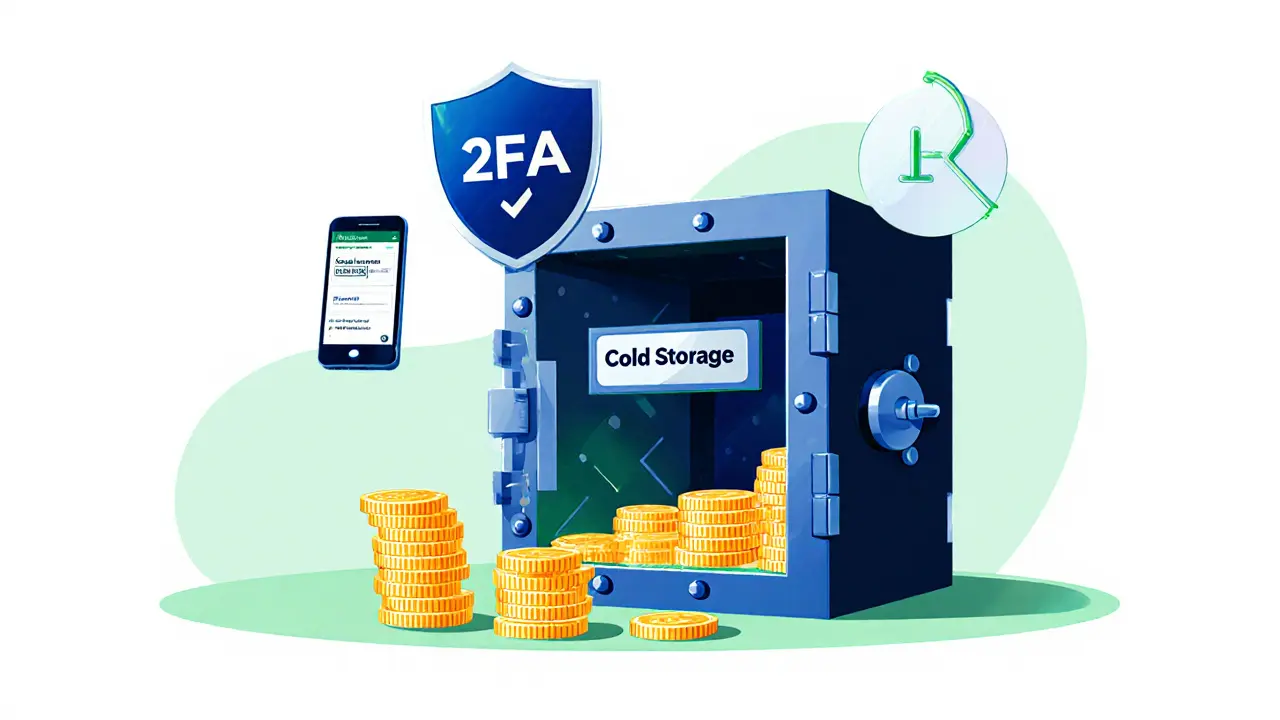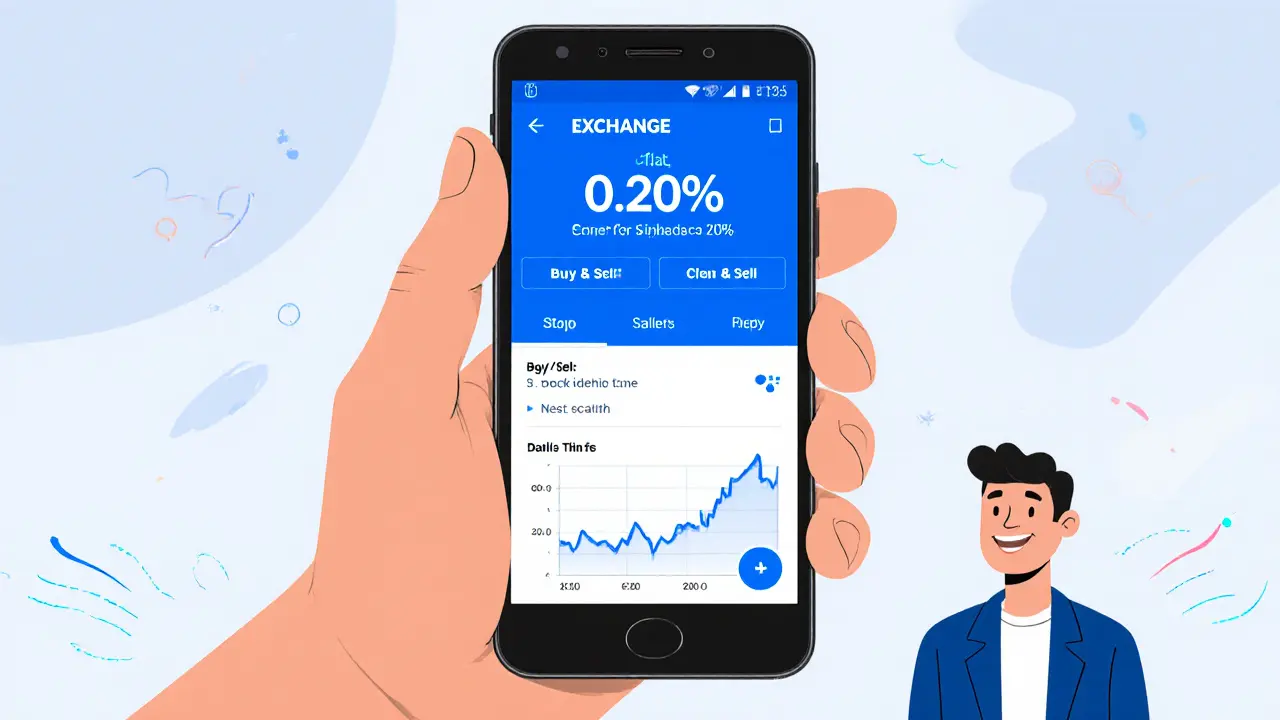OEX Trading Fee Calculator
OEX Trading Fee Calculator
Calculate your trading fees on OEX Exchange and compare with Binance, Coinbase, and Kraken. See how much you save with OEX's low flat fee.
Trade Amount
Comparison
Compare OEX fees with major exchanges:
Fee Breakdown
Enter your trade amount to see your potential fees.
If you’ve been scrolling through crypto exchange listings and wondering whether OEX lives up to the hype, you’re not alone. The platform promises a simple, low‑fee experience for both beginners and seasoned traders, while its sister project, the OpenEX Network token, tries to carve a niche in the crowded Layer 2 arena. This review breaks down what you’ll actually get, where the gaps are, and how OEX stacks up against the big players.
Key Takeaways
- Flat 0.20% trading fee - cheaper than the industry‑average 0.25%.
- Security relies on cold storage and mandatory 2FA, but public audit reports are sparse.
- Margin trading and advanced order types are available, though documentation is thin.
- Token OEX (OpenEX Network) offers cross‑chain utility but suffers from volatile price swings and contradictory supply data.
- Overall trust score is moderate; transparency gaps keep it behind Binance, Coinbase, and Kraken.
What Is OEX Crypto Exchange?
OEX is a user‑oriented cryptocurrency exchange that markets itself as a “simple digital currency trading platform” for both newcomers and experienced traders. It supports spot trading, margin positions, and a handful of order types (limit, market, stop‑limit). The platform’s UI leans heavily on a clean, mobile‑first design, promising quick onboarding and fast order execution.
Fee Structure - The Numbers That Matter
One of the biggest draws for OEX is its flat‑fee model. Every trade-whether you’re a maker or taker-costs 0.20%. To put that in context:
| Exchange | Trading Fee | Maker/Taker Split |
|---|---|---|
| OEX | 0.20% flat | Same for both |
| Binance | 0.10%‑0.20% | Maker 0.10%, Taker 0.20% |
| Coinbase | 0.50%‑0.60% | Flat |
| Kraken | 0.16%‑0.26% | Maker 0.16%, Taker 0.26% |
The fee advantage is clear, but OEX does not publish withdrawal fees or detailed deposit method costs, leaving a blind spot for cost‑conscious users.
Security Measures
Security is a make‑or‑break factor for any exchange. OEX employs multi‑layer protection:
- Cold storage holds the majority of user funds offline.
- Two‑factor authentication (2FA) is mandatory for login and withdrawals.
- IP‑based login alerts and device‑binding options are available.
What’s missing are publicly available audit reports or a clear regulatory registration list, which many competitors provide to reassure users.
Trading Features Beyond the Basics
Beyond spot trading, OEX offers:
- Margin trading with up to 5× leverage for select pairs.
- Advanced order types: limit, market, stop‑limit, and iceberg orders.
- Basic charting tools and real‑time market depth.
These features are useful for seasoned traders, yet the help center contains only brief tutorials, making the learning curve steeper than promised.

Supported Assets and Liquidity
The exchange lists a modest range of cryptocurrencies-around 35 pairs at the time of writing. Major coins (BTC, ETH, USDT) are well‑represented, but many smaller altcoins are missing, and the order books for niche assets can be thin. Users have reported occasional slippage on larger trades, a likely symptom of limited market depth.
OpenEX Network Token - The OEX Coin
OEX token is the native utility token of the OpenEX Network, a Layer 2 Web3 platform that aims to deliver fast, low‑cost cross‑chain transactions. The token powers fee discounts, governance voting, and access to premium features on the network’s mobile app.
Tokenomics and Price Volatility
Price data from August 2025 shows OEX trading at roughly $0.0015, with a 12‑month high of $0.0042 and a low of $0.0009-a 367% spread. Supply figures are contradictory: some sources list a total supply of 30 million, while others claim 10 billion tokens. This discrepancy raises red flags about transparency.
Token utility includes:
- Staking rewards that grant users a share of network fees.
- Governance rights to propose and vote on protocol upgrades.
- Discounts on OEX exchange trading fees (up to 20% for token holders).
Pros and Cons - Quick Checklist
- Pros: Low flat fee, simple UI, mobile‑first design, margin trading, cross‑chain token utility.
- Cons: Opaque withdrawal fees, limited asset list, scarce public security audits, contradictory token supply data, modest liquidity for OEX token.
How OEX Stacks Up Against the Leaders
| Feature | OEX | Binance | Coinbase | Kraken |
|---|---|---|---|---|
| Trading Fee | 0.20% flat | 0.10%‑0.20% | 0.50%‑0.60% | 0.16%‑0.26% |
| Margin Trading | Yes (5×) | Yes (up to 125×) | No | Yes (5×) |
| Asset Variety | ~35 pairs | >500 pairs | ~150 pairs | ~200 pairs |
| 2FA Requirement | Mandatory | Optional | Optional | Optional |
| Cold Storage | Yes (majority) | Yes | Yes | Yes |
| Regulatory Disclosure | Limited | Extensive | Extensive | Extensive |
While OEX wins on fee simplicity, it trails heavily on asset breadth and regulatory transparency-critical factors for institutional or risk‑averse traders.
User Experience and Community Sentiment
Public forums (Reddit, Trustpilot) have scant mentions of OEX, making it hard to gauge real‑world reliability. The project’s official channels-Twitter @openex_network and Telegram t.me/oex_en-post regular updates, yet they lack concrete user‑support metrics like average response time or issue resolution rate.
Future Outlook
For OEX to grow, two things are vital:
- Publish a detailed fee schedule, including withdrawal and deposit costs.
- Release independent security audit reports and clarify regulatory standing in key jurisdictions (e.g., EU, AU, US).
The OpenEX Network token’s cross‑chain vision aligns with the broader Layer 2 trend, but without a clear token supply and liquidity roadmap, it may struggle to attract serious investors.
Final Verdict - Should You Try OEX?
If you’re a casual trader who values a low flat fee and a straightforward mobile app, OEX is worth a test run-just keep a modest amount on the platform until transparency improves. For high‑volume traders, institutional users, or anyone needing solid regulatory guarantees, established exchanges like Binance, Coinbase, or Kraken remain the safer bet.
Frequently Asked Questions
What fees does OEX charge for withdrawals?
OEX does not publicly list withdrawal fees on its website. Users typically encounter a network‑based fee that varies by blockchain, but the exact amount must be confirmed during the withdrawal process.
Is OEX regulated in any jurisdiction?
Regulatory information is sparse. The exchange mentions compliance with KYC/AML procedures but has not published a licensing or registration list for any financial authority.
How does the OEX token provide fee discounts?
Holding OEX tokens in the exchange wallet can reduce the flat 0.20% trading fee by up to 20%, depending on the amount staked within the OpenEX Network’s governance module.
Can I trade on OEX with leverage?
Yes. OEX offers margin trading with up to 5× leverage on selected major pairs like BTC/USDT and ETH/USDT.
What is the main advantage of the OpenEX Network token?
The token enables cross‑chain swaps, governance voting, and fee discounts across the OpenEX ecosystem, aiming to simplify multi‑blockchain transactions for users.













Write a comment